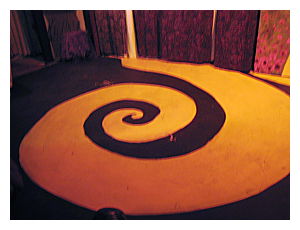Review: The Wizard of Oz (Austin Drama Club) by Austin Drama Club
by Michael Meigs
The great myths exercise a terrific and sometimes terrifying influence on us. For example, I've been driving around Austin listening to Derek Jacobi -- first, his recitation of Mallory's Le Mort d'Arthur, and more recently, his reading of the Robert Fagles translation of The Iliad. Those are stories that shaped the self concepts of the ancient races and nations. The narratives and the rich language exercise a hypnotic influence on a listener today, despite the veil of time.
Our American culture is certainly going to leave behind its own huge rubbish pile of cultural artifacts, ranging from Edgar Allen Poe to Hemingway to Casablanca to I Love Lucy to The Matrix to YouTube. And what out of all that is likely to endure?
While living in Nicosia, Cyprus, I made the discovery that the word in Greek for "newspaper" is εφημερίδα: "ephemerida." These days, back in the United States and seeking to understand American culture, I come back again and again to the ephemeral nature of it all.
All the more so, given the fact that I've chosen to explore theatre arts and to recount for an unknown audience my impressions of an art that is among the most immediate but also certainly the most ephemeral of all -- the live performance of narrative. You just have to be there. A theatrical performance varies from night to night, responding to the audience, the weather, the humors of the actors, and to whatever else is in the air.
There is something innately magical and tribal in the ritual of theatre, particularly in the theatre of willing spectators huddled in a small space to hear a familiar story. A sort of delicious delirium. You get it around the campfire at scout camp or around a table in the back of the bar, late at night. That's just the feeling you have at this production of The Wizard of Oz by the Austin Drama Club, formerly known as the Velvet Rut Theatre.
The Wizard of Oz is a cultural touchstone for Americans, primarily because of the delights of the MGM's 1939 film version, starring Judy Garland and directed by Victor Fleming. The film won only two Oscars, both for music, because the 1940 awards were an 8-Oscar sweep for Gone with The Wind, also directed by Fleming. As the world tipped toward war, with the United States clutching to the edges in hopes of avoiding involvement, American popular culture was over the rainbow or in a land of imagined southern chivalry where the hero/villain frankly didn't give a damn.
The Wizard of Oz is likely to endure. It was first shown on television in 1956. Over the next 30 years it was broadcast annually, first by CBS, later by NBC, then by CBS. That's when I first experienced the wonder of Dorothy, her dancing and singing companions, and the Emerald City. The film now belongs to Turner Entertainment, which shows it several times a year. You can buy it at Amazon.com for prices ranging from $12.87 for an import from Korea to $45 for the about-to-be-released 70th anniversary 3-DVD edition. 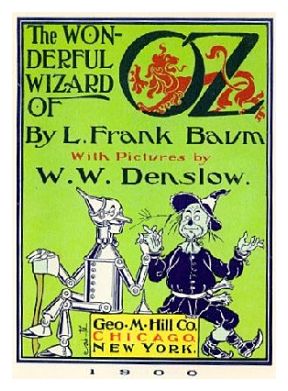
The story comes from the children's novel by L. Frank Baum, published in 1900. Baum declared to his readers that his story "aspires to being a modernized fairy tale, in which the wonderment and joy are retained and the heartaches and nightmares are left out."
The book was so successful that Baum wrote variations on it for most of the rest of his life -- Project Gutenberg lists 15 Oz books by him, spurred by the first of them, The Wonderful Wizard of Oz. All can be downloaded for free, as can an audio version of The Wonderful Wizard of Oz.
The MGM version is relatively close to that of Baum. It condenses the narrative somewhat and omits some occasional bloody self-defense by the principals (the Tin Man's axe is put to good use on wild beasts). MGM's coy "dream doubling" of figures in Oz by the farmhands, the wicked Elvira Gulch, and the traveling medicine man doesn't occur in the book. For his own reasons -- probably to speed the narrative -- director Justin Lavergne leaves most of that out.
The Chronicle carries an e-mail address with which to obtain the particulars of a show: ceasarbnice@yahoo.com. The Drama Club has its own MySpace page with a listing for the full year. Still to come in 2009 are Troilus and Cressida, Richard III, After The Fall by Arthur Miller, Salome by Oscar Wilde, and King Lear.
Those arriving for the opening night of The Wizard of Oz were greeted cordially and ushered into a dark and cave-like interior room, in which 26 or 28 seats had been arranged, some of them on an upper-deck arrangement very similar to a big bunk bed. The small playing space -- perhaps 8 x 15 feet -- was painted with the golden spiral of the yellow brick road, and two television monitors for simultaneous closed circuit broadcast were positioned high on either side of a curtained archway.
The big band music playing initially in the background was a bit incongruous. The house filled right up, and everyone was in an anticipatory mood. Lighting by Japhy Fernandez was minimal, heavily tinted in reds and blues, and not at all conducive to digital photography. The 92-image photo gallery of The Wizard of Oz at MySpace shows a playing space in which atmosphere often predominates over illumination.
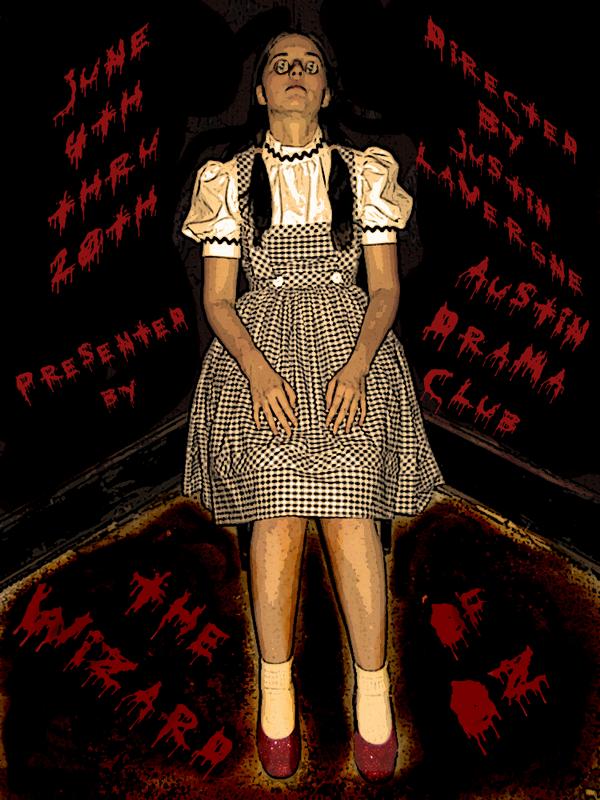
The lighting is dim but the show is not dark, despite the Drama Club's poster of a Dorothy appearing to come from the undead. It's principally a visual transformation, an extended solarized image, since Lavergne's script is mostly verbatim from the movie. We might be a bit surprised at first to see Aja McMillan as Dorothy stalking the stage in shorts and big round-footed high-heel boots, but we're reassured by the familiar appearance and attitudes of Russell McQueen as Uncle Henry and Tyrrell Woolbert as "Aunt M."
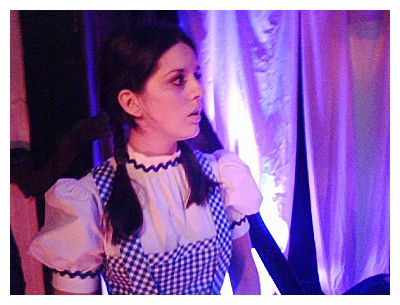
Dorothy gets whooshed off to Oz via a storm represented by a short ballet with a flapping bedsheet. She changes her fashion clodhoppers for the ruby slippers and her casual garb for proper Dorothy gingham, and we're on the Yellow Brick Road again.
It's a musical, remember, and our friends sing the familiar numbers to a recorded orchestra track. Aja McMillan is a lovely, sincere Dorothy with a good singing voice. Glenda the Good is played with sparkle, all in pink, by the attractive Jessica Bacon, whose bouncy, carefree assurance suggests that Ms G might have been gotten into some of her own fairy dust.
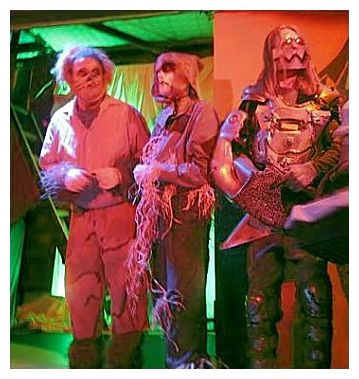 This scarecrow, played by Christopher Harris, could be a character out of Tim Burton, and he's done with a sauciness surpassing that of Ray Bolger in the movie. ("How would you like to be stuck up here, with a pole up your . . . back??")
This scarecrow, played by Christopher Harris, could be a character out of Tim Burton, and he's done with a sauciness surpassing that of Ray Bolger in the movie. ("How would you like to be stuck up here, with a pole up your . . . back??")
Josh Kelly as the Tin Man may look like something from a video game, but he's a fine innocent and has the best song-and-dance abilities of the three.
Stephen Reynolds as the Cowardly Lion reincarnates my favorite character with panache -- he works manfully (lionfully?) through his musical numbers ("Courage" and "King of the Forest") despite his not having much vocal range. Who knew that Bert Lahr really could sing?
 Director Justin Lavergne delivers the only double role, that of the medicine man and the wizard, with matter-of-fact presentation.
Director Justin Lavergne delivers the only double role, that of the medicine man and the wizard, with matter-of-fact presentation.
A proper treat is Jennifer Fielding as the Wicked Witch. She pouts, stalks, and cackles in the Margaret Hamilton tradition, and her slithery angularity is a nice counterpart to Glenda's goody-two-shoes bounce.
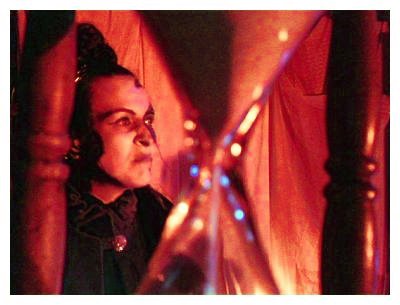
The Austin Drama Club's production of The Wizard of Oz is a stylized homage to America's great story of growing up, done by a band of friends on a shoestring budget, largely for their own amusement and for that of their families and close friends. Their production is respectful of the movie's script, characters, and message. This is a non-commercial joint production by theatre devotees. They're amateurs in the best sense of the word: those who love and appreciate an artwork and an art form. With so few seats available, you spectators are necessarily a privileged set of participants.
No one admonishes you to check your cell phone. It appears that there are no concessions for sale. There's a jar in the hall for contributions, next to the chalkboard that serves as the show's program, but no one mentions it to you.
You're there because you heard about it and you want to participate. That's the origin of theatre, the coming together to celebrate our shared myths, whether they be those of antiquity or those from Hollywood.
Review by Heather Barfield on her blog at vividstage.com, June 16
EXTRA
Cast List:
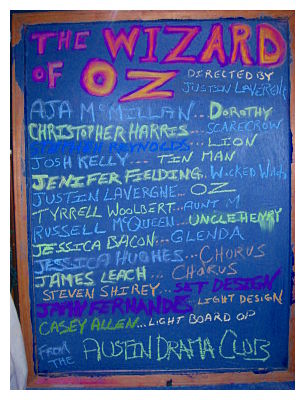
Hits as of 2015 03 01: 9247
The Wizard of Oz (Austin Drama Club)
by Director Justin Lavergne and the ensemble
Austin Drama Club
to be revealed
Austin, TX, 78700
